
July 2, 2018

It’s no coincidence that business aircraft operators are hearing more and more about next-generation air transportation system (NextGen) initiatives, both in the U.S. and abroad. Following years of announcements concerning future deployments, many NextGen technologies are now in use around the globe, with more slated to go live in the near future.
“We have completed the necessary infrastructure for NextGen to enable technologies that business aircraft flight crews can benefit from today,” noted Steve Bradford, the FAA’s chief scientist for NextGen. “We’re providing new digital systems for the key elements of the National Airspace System (NAS) for all phases of flight.”
Business aircraft equipped with GPS may navigate a flight path with much greater precision and accuracy than with legacy navigational systems. Aircraft equipped with wide area augmentation systems (WAAS) have nearly 4,000 WAAS LPV (localizer performance with vertical guidance) approach procedures at some 1,900 airports, more than 1,100 of which don’t have an ILS.
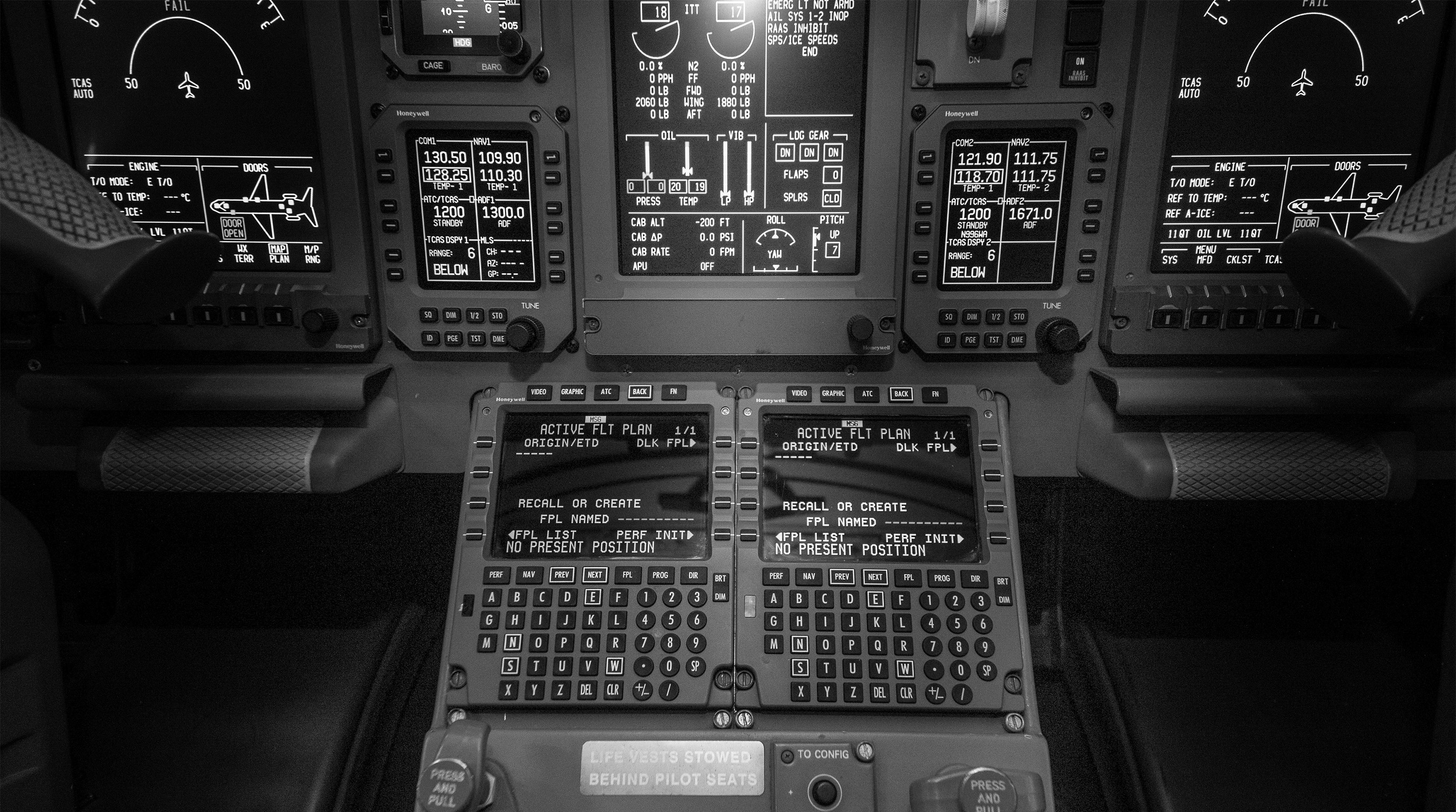
During en route domestic and oceanic cruise, performance based navigation (PBN) enables more direct aircraft routing and improved on-time arrivals. Additionally, participating operators in the FAA’s collaborative decision-making (CDM) process can utilize airborne rerouting (ABRR), which enables more efficient rerouting during adverse weather conditions and periods of high demand. New automation application tools, such as integrated departure arrival capability (IDAC), also enable scheduled entry times into the overhead stream, automating the departure-release coordination process.
First deployed across oceanic airspace – most notably through the future air navigation system (FANS 1/A) data link mandate across the North Atlantic Track (NAT) system, where voice communications are often unreliable – controller-pilot data link communications (CPDLC) enables operators to receive and acknowledge text-based departure clearances through the aircraft’s flight management system, offering improved pilot comprehension of complex clearances while also reducing radio frequency congestion.
Business aviation has also been a driving force behind the widespread rollout of CPDLC-departure clearance (CPDLC-DCL) services, enhancing operational safety and efficiency at some of the nation’s busiest airports. Through the end of April, 57 U.S. airports were equipped for CPDLC-DCL, with four more airports, including a key business aviation airport, Van Nuys in Southern California, slated to become CPDLC-DCL operational this summer.
“Our industry has been a bigger player in this area than initially expected,” said Heidi Williams, NBAA’s director of air traffic services and infrastructure. “The FAA has indicated many times that they under-estimated the number of business aircraft operators that would equip for these capabilities.”

ADDITIONAL TECHNOLOGIES TO BE DEPLOYED SHORTLY
More NextGen technologies are slated to come on line across the U.S. in the near future. Beginning in 2019, the FAA plans to deploy initial en route data comm and clearance information to en route aircraft, making it easier to access reroute changes and improve controller requests by eliminating voice communication for strategic reroutes. The agency projects full en route data comm to be in place four years later.
One of the most familiar and recognizable NextGen initiatives is the Jan. 1, 2020, mandate that aircraft operating in controlled airspace be equipped with ADS-B Out systems. The FAA has completed nationwide installation of 634 radio stations to support ADS-B implementation.
We have completed the neces-sary infrastructure for NextGen to enable technologies that business aircraft flight crews can benefit from today.
In coming years, flight crews will also see additional time-based metering applications that will enable pilots to remain on the PBN procedures, advancing a NextGen goal of trajectory based operations (TBO), granting instantaneous flight position and path information for all aircraft operating in the NAS.
“Through TBO, controllers will be able to manage traffic more efficiently by having a more predictable, flexible and efficient system, gate-to-gate,” said Bradford. “This will aid business aviation by optimizing overall airspace capacity and fleet performance, as well as the efficiency of individual flights.”
Greater deployment of Airport Surface Detection Equipment – Model X (ASDE-X) will provide a better view of ground operations. Airports equipped with ASDE-X will fuse data from multiple sources to provide controllers with a more accurate picture of runway and taxiway activity, enabling real-time collaborative decision-making with business aircraft pilots using apps on mobile devices.

“NBAA members are already benefitting from a wide array of NextGen services, and our industry stands ready to support further rollouts of these capabilities going forward,” said Williams.
NEXTGEN BY THE NUMBERS
To view a slideshow of NBAA’s NextGen infographics, click on the images below:
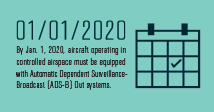 |
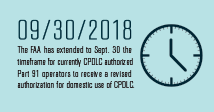 |
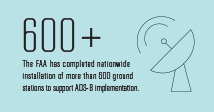 |
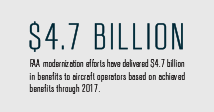 |
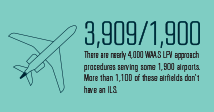 |
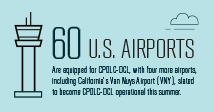 |

NEW NAT DATA COMM MANDATES ON THE HORIZON
Many NextGen technologies have been driven by deployment of these services in the North Atlantic (NAT) Region. The first phase of the mandate for data link services in the NAT commenced in February 2013, requiring all aircraft operating along two specified tracks within the NAT organized track system (OTS) between FL360 to FL390 (inclusive) to be fitted with and use FANS 1/A (or equivalent) CPDLC and ADS-C (automatic dependent surveillance-contract) equipment.
Phase 2B extended that requirement to FL350-FL390 (inclusive) throughout the International Civil Aviation Organization (ICAO) NAT Region, with exceptions for state aircraft and search and rescue operations. New York Oceanic airspace is currently exempt from the NAT data link mandate until Jan. 30, 2020, at which time Phase 2C will become effective across all NAT regions from FL290 and above.
Operators accustomed to flying in high-level NAT Tracks (NAT HLA) must also comply with additional requirements following the March 29 implementation of performance based communication and surveillance (PBCS) standards between FL350 and FL390 inclusive.
PBCS replaced two existing trial programs: (1) reduced lateral separation minimum (RLatSM) to 25 nautical miles and (2) reduced longitudinal separation minimum (RLongSM) in the Shanwick Oceanic Control Area to five minutes between aircraft in trail along the same track. While those standards remained under the new system, Part 91, 135, 121 and 129 operators wishing to fly in the affected tracks must hold a revised data link authorization through an LOA or OpSpec A056, demonstrating compliance with Required Communication Performance 240 and Required Surveillance Performance 180 specifications.
Although PBCS went live in March, the FAA has extended to Sept. 30 the timeframe for currently CPDLC authorized Part 91 operators to receive a revised authorization for domestic use of CPDLC. This will provide additional time for the agency to process LOA applications. However, operators intending to fly now in the NAT HLA must hold the necessary authorizations.
Changes are also coming for operators now flying in the NAT HLA under minimum navigation performance specification (MNPS) authorizations. Since January 2015, all new NAT operational authorizations (B039) require reduced navigation performance (RNP) 10 or RNP 4, with existing NAT operational MNPS authorizations grandfathered in. After Jan. 30, 2020, however, only RNP 10 or RNP 4 authorizations will be valid.


 International Business Aviation Council Ltd.
International Business Aviation Council Ltd.